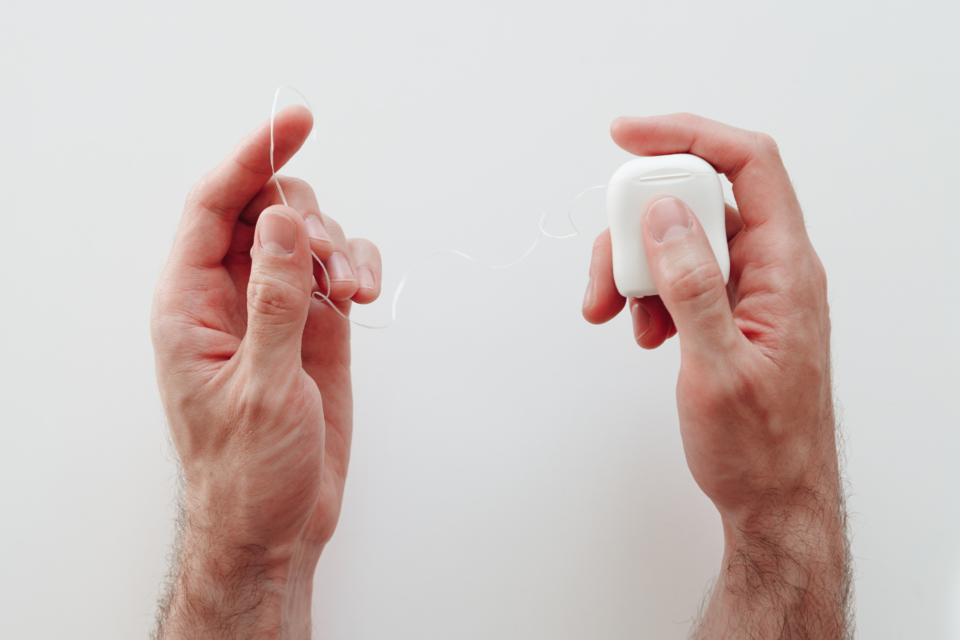White Teeth – Methods and Tips for Teeth Whitening
Who doesn’t dream of a white healthy smile? Here you’ll find everything you need to know about the different methods of teeth whitening, including preparations, advantages and disadvantages, and possible contraindications

Teeth Whitening Methods
We offer two main methods for teeth whitening: professional in-office bleaching at a dental practice and the option of using custom-made trays for at-home application.
In-Office Bleaching: This method is performed directly in a dental office and delivers quick and impressive results. Under the supervision of an experienced team, we use highly concentrated bleaching agents that are safely applied to your teeth. One session may be sufficient. However, a common drawback is increased tooth sensitivity following in-office bleaching.
Home Bleaching: For those who prefer the convenience of whitening at home, we offer custom-made bleaching trays. These trays are crafted precisely from impressions of your teeth, ensuring optimal fit and whitening effectiveness. You’ll receive a milder bleaching gel, applied over a longer period. The gel in these trays is specially formulated to provide maximum results with minimal sensitivity. This method requires more patience but offers flexibility and can be a more cost-effective option.
![[Translate to EN:] Bleaching Famidental Biel/Bienne](/fileadmin/_processed_/3/d/csm_Bleaching_Z%C3%A4hne_Zahnaufhellung_Biel_Zahnarzt_be12e4594f.jpg)
What is Carbamide Peroxide and what does teeth whitening involve?
Carbamide peroxide is a popular substance used in teeth whitening. It is a compound made from urea and hydrogen peroxide, which gradually breaks down into these two components when it comes into contact with water. The gradual release of hydrogen peroxide makes carbamide peroxide a gentler yet effective option for teeth whitening, especially for at-home applications.
![[Translate to EN:] Home Bleaching Zahnarzt Biel](/fileadmin/_processed_/0/6/csm_Homebleaching_Zahnaufhellung_Bleaching_74e1e758e1.jpg)
Functioning of Carbamide Peroxide
Decomposition into Hydrogen Peroxide: When carbamide peroxide comes into contact with saliva in the oral cavity, it slowly breaks down into hydrogen peroxide and urea. This slower release of hydrogen peroxide allows for a longer exposure time on the teeth, resulting in effective whitening but with lower risks and fewer side effects compared to direct use of hydrogen peroxide.
Oxidation of Pigment Molecules: The released hydrogen peroxide acts as an oxidizing agent. It penetrates the enamel and the underlying dentin, where it chemically oxidizes the organic pigments that cause tooth discoloration. This oxidation breaks the bonds that form the color pigments, thereby making the teeth appear whiter.
Results and Application: Carbamide peroxide is typically available in concentrations ranging from 10% to 22% in teeth whitening products. Lower concentrations are particularly suited for overnight use, as the gel works slowly and reduces the risk of tooth sensitivity and gum irritation. Higher concentrations are intended for shorter daytime applications.
![[Translate to EN:] Bleaching Zahnarzt biel Famidental](/fileadmin/_processed_/c/6/csm_Bleaching_Z%C3%A4hne_Zahnaufhellung_Biel_Zahnarzt_Seeland_0605647114.jpg)
Benefits of Using Carbamide Peroxide
Reduced Sensitivity: Due to the slower release of hydrogen peroxide, users are less prone to tooth sensitivity compared to treatments that use higher concentrations of hydrogen peroxide.
User-Friendliness: Products with carbamide peroxide are easy to use and can be safely applied at home, making them a convenient option for many people.
Controlled Whitening: Since the release of the whitening agent occurs over a longer period, users can better control the level of whitening by adjusting the frequency and duration of application.

Disadvantages
The results are not as immediate as with treatments that use higher concentrations of hydrogen peroxide. Depending on the strength of the carbamide peroxide used and the individual tooth discoloration, it may take several days to achieve the desired whitening effects.
After a whitening treatment, temporary tooth sensitivity may occur. To minimize this, I recommend using toothpaste for sensitive teeth that contains ingredients such as potassium nitrate, arginine, or sodium fluoride.
![Strahlendes Lächeln – Ihre Zahngesundheit im Fokus | Famidental Blog [Translate to EN:] Ihre Zahngesundheit im Fokus](/fileadmin/_processed_/1/a/csm_dana-brown-A-lESE9cTFg-unsplash_e894730392.jpg)
Diet and Oral Care After Whitening
After teeth whitening, it is important to avoid certain foods and beverages that may stain your teeth.
Coffee and Tea – Especially black tea and coffee are known to cause significant staining due to their high tannin content.
Red Wine – Its dark color and acidity can contribute to tooth discoloration.
Cola and Other Dark Soft Drinks – These contain phosphoric acid and dyes that can leave residues on the teeth.
Fruit Juices – Especially juices made from pomegranates, berries, blackcurrants, and other dark fruits.
Soy Sauce and Soy Sauces – Their intense, dark color can affect tooth enamel staining.
Curry and Turmeric – These spices have intense pigments that, when used regularly, can stain teeth.
Berries – Such as blueberries, raspberries, or blackberries, which contain strong dyes.
Balsamic Vinegar – Light vinegar may be less problematic, but dark balsamic vinegar can cause discoloration.
Tomatoes and Tomato Sauces – Their acidity and deep red color can influence tooth discoloration.
Smoking – Nicotine and tar in tobacco are among the most harmful substances for tooth color.
I recommend consuming only clear or white foods during the first two weeks after the treatment.

When is Teeth Whitening Contraindicated?
Here are some of the key circumstances under which teeth whitening is not recommended:
Pregnancy and Breastfeeding: Women who are pregnant or breastfeeding should avoid teeth whitening treatments, as the effects of bleaching agents on the baby have not been sufficiently studied.
Untreated Dental Conditions: Individuals with untreated cavities, advanced periodontitis, or serious gum diseases should not undergo whitening treatments. Bleaching can worsen existing problems or lead to significant pain.
Sensitive Teeth: For people with highly sensitive teeth, bleaching can further increase sensitivity and cause discomfort.
Allergies to Bleaching Agents: People who are allergic to ingredients used in bleaching products should avoid whitening.
Existing Dental Restorations: Fillings, crowns, or veneers do not lighten during bleaching treatments. This can lead to uneven coloring, as the natural teeth lighten while the restored areas retain their original color.
At Famidental, we place the utmost importance on ensuring your path to a radiant smile is safe, effective, and tailored to your individual needs. Visit our dental practice in Biel and consult with our expert team.
Schedule an Appointment
If you have any questions about oral health, our experts at Famidental in Biel are happy to assist you.

More from our offer






